I believe it’s possible to be a great teacher while still having a great personal life. But that requires knowing how to figure out what’s most important, do it well, and let go of the rest.
Prioritizing tasks is the foundation of using your time effectively and working more efficiently. Here are 7 strategies to help you do that.
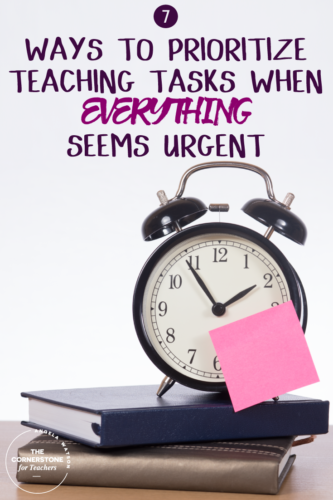
Want to listen instead of read?
Use the podcast player above to play or download this episode.
1) Recognize that you can’t do it all, and everything is not equally important
When your job starts to feel completely overwhelming and it seems like you could work 24 hours a day and still not be done with anything, chances are good that you’ve either lost sight of your priorities or never set them to begin with. You’ve allowed so many tasks to pile up on your plate that they all seem equally important, and it feels like the world will come crashing down if you don’t complete them all. Right now. Perfectly.
If you’re not sure whether a task is important, ask yourself, What would happen if I didn’t do this?
For example, what would the consequence be for not rewriting every misspelled word on every student’s paper? How would your lesson go if the worksheet you create doesn’t have adorable clip art? What would be the result of not color-coding your filing system, creating a lengthy welcome packet for your student teacher, or changing your bulletin board borders on a monthly basis?
You can do anything, but you can’t do everything. You must determine which tasks are really critical by asking yourself, What will happen if don’t do this? If you can live with the result, put the task in an “Eventually” section of your to-do list… or remove it altogether.
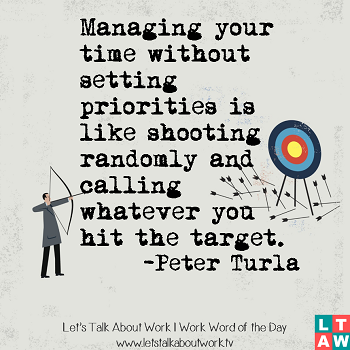
2) Distinguish between the urgent and the important
Nearly every issue that crops up during the school day seems like an emergency. This is especially true of our interactions with students, since kids often feel like their requests are earth-shattering in importance and need our attention right away.
However, urgent and important are not synonymous. Ask yourself, What will happen if I do this later? Can this be handled in a few minutes? A few hours? A few days?
Do not let other people’s last-minute requests drive your schedule. That doesn’t mean you ignore the work and let them down, it just means you choose a more convenient time to accommodate them.
When your team leader announces she needs a set of forms completed by the end of the school day, don’t stop your grading immediately to fill them out. Write “Finish forms” on the day’s to-do list and stay focused on the task at hand.
When a parent tries to corner you in the parking lot for an unscheduled conference, say, “I need to finish planning this science activity your child is going to do tomorrow morning —it’s going to be incredible, I know she’ll tell you all about it! Can I schedule a conference with you Thursday afternoon when I’m free and can really focus on what you’re telling me?”
When a student asks you to write a recommendation letter or something else outside the scope of your usual instructional tasks, tell him, “Sure! As I explained in my policies at the beginning of the year, I don’t have time during the school day to work on those kinds of tasks, but I give up one of my Saturdays each month to help out. I can have the letter to you in two weeks.”
You are in control of how you manage your time. Ultimately, YOU are responsible for your time management and productivity. If a last-minute or urgent request is not critical, you can choose when to complete it.
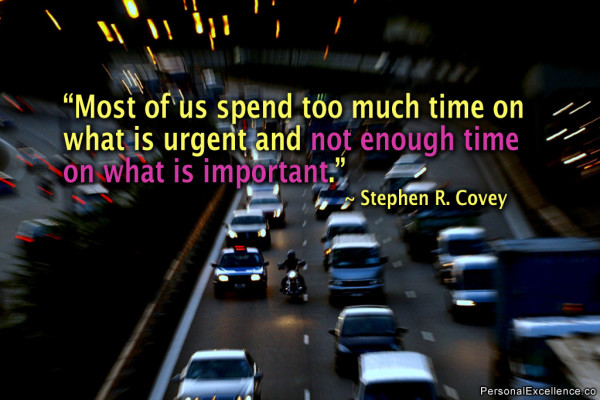
3) Respond to interruptions while still making planned work the priority
Take a few seconds to write down your next actionable step for your planned work before responding to the interruption. This will make it easier for you to pick back up where you left off.
For example, if you are typing an email before school and the school psychologist stops by to quickly fill you in on a student’s issue, don’t leave the email half done and take the chance of losing it accidentally or forgetting to send it. Say, “Sure, can you give me one second?” and hit save, then scrawl on your to-do list email Sara’s mom.
That will take less than 10 seconds and is no inconvenience whatsoever to the psychologist. Without being rude in any way, it sends a clear message that if she chooses to stop by unannounced, she can expect to find you diligently working on something important (which will decrease the likelihood of future unplanned visits.) Best of all, when the psychologist leaves, you can immediately refocus on what you were doing without wasting time wondering, “Now what was I doing again?”
4) Get information out of your head and onto a list
Creating lists is essential to getting things done. If we don’t write something down, it takes up space in our minds which could otherwise be used for creative tasks and being productive.
Holding information in our minds is also very stressful. You will feel like you can never stop thinking about work if you are trying to remember everything you need to do. So when you’re lying in bed at night or grocery shopping and you suddenly think of a task, write it down, and then dismiss the thought from your mind.
You have to find a list-making system that works for you. Then, when you’re going over your to-do list in the morning…
5) Figure out the most important task of the day and do it first
Ask yourself, What is the one thing I can do today that will allow me to leave work feeling a real sense of accomplishment? There are many things you need to get done, but chances are, there’s ONE THING that’s more important than everything else.
Maybe you have a pile of two-week-old tests you feel guilty about not having graded yet, and it weighs on you every time you look at them.
Maybe you’re being observed the next day, and haven’t even begun to think about what lesson you’ll teach.
Maybe you have an IEP meeting and are feeling anxious because your documentation isn’t in order.
These urgent, important tasks will create anxiety if you procrastinate and focus on other work. So write down your one thing —the most important task of the day, the task you cannot feel happy leaving undone when you drive out of the school parking lot that afternoon. If it’s too hard to choose which task is most important, pick the hardest one (the task that you most dread and are likely to keep putting off.) Then get that task done first.
If you have to wake up early in order to make time for it, do that! Get the most important thing done before you get sucked into all the other work. You will feel a tremendous sense of accomplishment when you get the hardest or most important task taken care of right away, and that feeling of productivity will set the tone for your entire day.
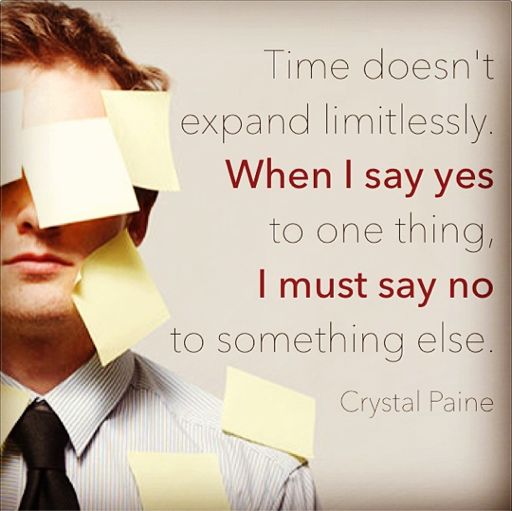
6) Group similar tasks together to increase efficiency and avoid multi-tasking
Have you noticed how much quicker it is to grade the last few papers in a stack than it is to grade the first few? That’s because you get into a flow after a while. You recognize the answer patterns, and your brain is trained on what to look for.
For that reason, it’s better to grade all the papers for an assignment at once, rather than just get to a couple whenever you can. It’s also more efficient to respond to all of your emails at a designated time rather than answering them one by one as they come in.
Always try to group similar tasks together. Do all your photocopies for the week in one trip to the office. Make all your parent phone calls before Open House in a single evening. Search online for multiple activity ideas at once. Get your brain in a productive flow, and go with it!
Multi-tasking is often the enemy of productivity because our brains just don’t switch between tasks as well as we’d like to think they do. Every time we stop grading papers to read an email, we lose precious seconds as our brain registers the email notification, reads the subject line, checks out the message, decides whether to respond or not, and so on. We then lose more time when we return to the grading, re-reading to find out where we were, and shifting back into the mindset for grading.
When you multi-task like this, each individual task takes longer to complete than if you’d gotten into a grading flow and concentrated solely on that, and then gotten into an email flow and concentrated on that. So, figure out what’s most important, do that task (and any similar tasks) first, and then move on completely to the next thing on your list.
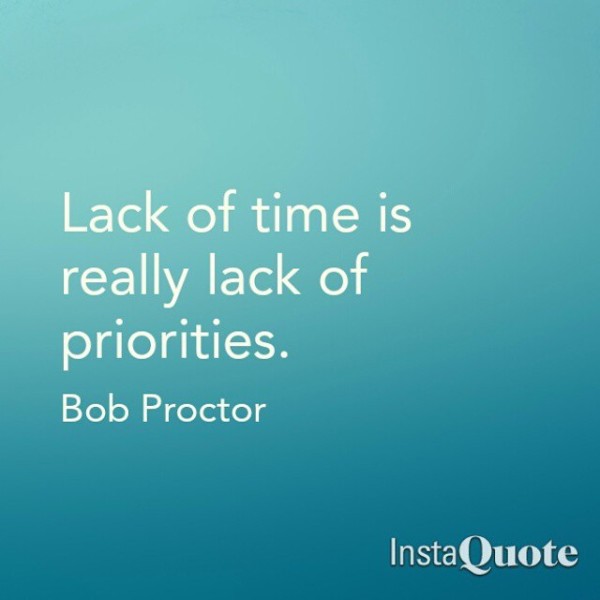
7) When in doubt, choose the kids
There will times when your most important priority doesn’t seem clear. In those instances when you’re in doubt, always choose the kids.
You’ll notice that the examples I’ve given of interruptions and unplanned tasks that need to be delayed have nothing to do with your time spent teaching and connecting with your students. All the planning and scheduling is meant to control the other demands on your time — email, grading, paperwork, and so on, so that you are better able to focus on your students in class. That is your number one job.
We have a tendency to get overworked and think that our lesson or our goal of getting kids to meet learning standards is the most important thing, and the kids’ needs become an interruption. The opposite is actually true: the kids are the most important thing, and the work is secondary. You teach students, not standards.
Whenever you are unsure of your priorities or unable to make a decision about how to use your time, ask yourself, Which of these tasks will benefit students the most? and do those items first. The work can always wait because you will never regret the time you spend helping kids and meeting their needs.
Not setting priorities is like shooting randomly and calling whatever you hit the target. Click To TweetNot sure what you can eliminate from your schedule or take off your plate?
I’ll walk you through it step-by-step so you can do fewer things, better!
Get the free challenge sent to your inbox now.
This post is based on the latest episode of my weekly podcast, Angela Watson’s Truth for Teachers. A podcast is like a free talk radio show you can listen to online, or download and take with you wherever you go. I release a new 15-20 minute episode each Sunday and feature it here on the blog to help you get energized and motivated for the week ahead. I’d love to hear your thoughts below in the comment section!
The Truth for Teachers Podcast
Our weekly audio podcast is one of the top K-12 broadcasts in the world, featuring our writers collective and tons of practical, energizing ideas. Support our work by subscribing in your favorite podcast app–everything is free!
Explore all podcast episodes
Angela Watson
Founder and Writer
Discussion
Leave a Reply
OR

Join our
community
of educators
If you are a teacher who is interested in contributing to the Truth for Teachers website, please click here for more information.










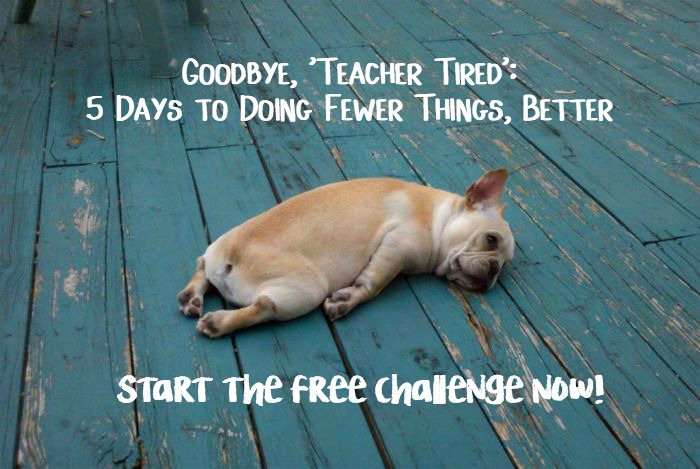









Great ideas! I definitely try to follow these and ask myself: will doing _____ positively affect student achievement? If not, it can be done later. Also, we have to keep tasks that affect other people a priority. For example, I shouldn’t put up a new bulletin board if the psychologist is waiting on my write-up about a student so she can prepare for the IEP meeting. If another teacher is waiting to borrow science supplies, I need to organize those before I grade papers.
I love prioritizing tasks that affect other people. That is a GREAT guideline! I’m so glad you shared it.
Hi Angela, I found this post extremely informative. Is your 40 hour workweek club membership suitable for teachers who are not based in the USA?
Hi, Tracey! We have several members in the club already who teach in other countries, including France and Netherlands. Because I don’t have direct experience with the demands on teachers abroad, I’m sure that international members will need to adapt the ideas I share a bit more than an American teacher would. However, this would only apply to things like lesson planning, not the productivity tips which I think would be useful for all teachers.
Amazing woman, great tips for the busiest of educators! In a time when encouraging and inspiring college students to become teachers, showing them how to manage their time is great!! I look forward to seeing your next post!! Thank you for all you do!!
This should be a required read for every new teacher (and most experienced teachers). It’s so easy to get overwhelmed and put your energy into the wrong things. I love the question “What will happen if I didn’t do this?” Great post.
Another great episode.
One thing I would add is that the time of day is really important for me to consider when I’m doing certain tasks. I’m a much better grader in the morning than I am in the afternoon, which is a better time for me to plan (or make copies when I’m a little tired from teaching all day). Context is really important too – I have a study hall in my room during my planning period, so I have been going to the media center. I’ve now conditioned myself that if I’m in the media center, it’s time to grade. And I always have a cup of tea too – pairing an activity that you don’t want to do with something you like to do is a powerful strategy!
Here’s something I struggle with, though. When I make a list I have no trouble with a goal like: “Grade one class of papers by the end of the day.” However, sometimes I have a vague goal like “Plan a lesson for tomorrow.” How can I make vague goals into concrete goals?
You’re right. That is kind of vague. What works for me is to set a timer on my phone, like “I want to be done with this lesson plan within 25 minutes so I can go home.” Set the timer, and dive in! (Sometimes I even lock my door so I don’t get interrupted!)
Then I try to follow a formula for myself to get the planning done for the next day:
1) Set up a question or a little mini-writing assignment to get things going for the kids
2) Find 2-3 things (handout? graphic organizer? book?) that will take the majority of the class time
* one activity to do together as a class
* one activity to work on in small groups or partners
3) Throw in an exit ticket question, and you’re done.
I cut things out like saying… I can draw this graphic organizer on the board and have my kids copy it and fill it in. Why spend time making or searching for the perfect graphic organizer when my students can draw it out?
Remember: It doesn’t have to be perfect– It just has to be done. You’re the only one who knows what “perfect” looks like, anyway.
Wonderful tips! Thanks for sharing.